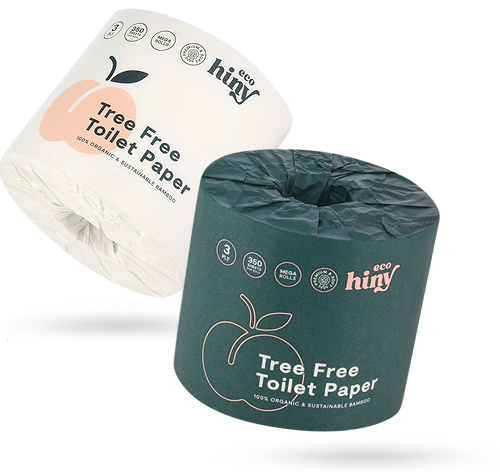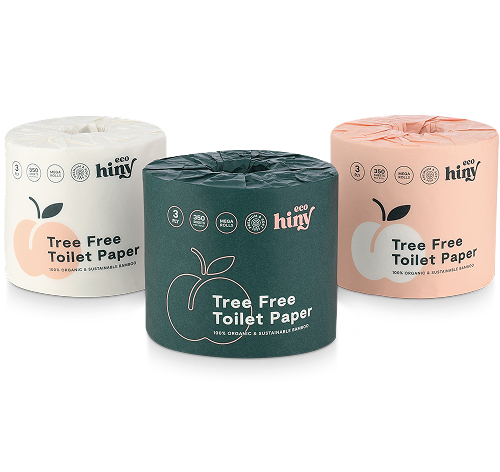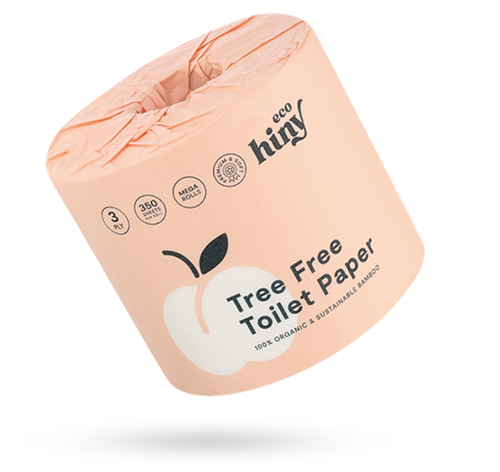Key Points
- Toilet paper is essential for personal hygiene and daily comfort, yet the environmental impact of traditional toilet paper is often overlooked.
- Traditional toilet paper production involves harvesting trees, chemical processes, and potentially harmful additives.
- Bamboo offers a safer and more sustainable material for toilet paper production.
Toilet paper is a routine aspect of daily life that is often taken for granted. Consumers don't often put significant thought into their toilet paper purchases; however, it plays a significant role in maintaining hygiene and comfort. Toilet paper is, without a doubt, an essential item in households.
From personal hygiene to cleaning up spills and messes, toilet paper is a practical and indispensable product. Its availability and quality can greatly impact daily routines and overall well-being. When considering that well-being, it helps to understand the importance of a toilet paper's manufacturing process.
Because the process of manufacturing traditional toilet paper contains substances and steps that should be concerning for eco-conscious consumers, ecoHiny wants you to be well informed before making your next T.P. purchase.
See what goes into traditional toilet paper and why we have a better alternative to offer.
Traditional Toilet Paper Production
Toilet paper is typically made from wood pulp that is derived from virgin wood from softwood and hardwood trees.
The wood is stripped of bark and chipped into small pieces. These wood chips are then processed in a chemical pulping process to separate the cellulose fibers from the lignin, hemicellulose, and other components of the wood. (1) The fibers are then washed, refined, and bleached to produce a pulp with the desired brightness and cleanliness.
After the pulp is prepared, it is mixed with water and various additives and chemicals to improve its strength, absorbency, and softness. This pulp mixture is then fed into a papermaking machine, where it is formed into a continuous sheet of paper. The wet sheet is then pressed to remove excess water and then dried using heated rollers or air.
Once dried, the paper is wound onto large rolls known as jumbo reels. These reels are then taken to a converting machine where the large rolls are split into smaller, more manageable rolls that are appropriate for household use.
The individual rolls are then cut, perforated, and packaged into the familiar rolls of toilet paper that we find in stores.

Kind to you, Kind to the planet
Our mission is to save one billion trees by making the switch to ecoHiny.
Environmental Concerns With the Process
One thing that ecoHiny will always stand for is trees! The environmental cost of losing our precious forests to toilet paper production is devastating. Nearly 5 million trees are lost each year to the traditional toilet paper industry. (2) Compromising this important natural resource comes at a cost.
With a decrease in trees comes an increase in carbon dioxide. Trees take in this greenhouse gas during photosynthesis. With fewer trees around to absorb carbon dioxide, the gas accumulates in the atmosphere and accelerates climate change.
Deforestation also disrupts our biodiversity. Countless species of plants and animals make their homes in our woodland areas. When forests are harvested, the habitats for these species are destroyed, which can lead to endangerment and even extinction.
Traditional toilet paper production poses another problem: It requires a significant amount of water—37 gallons for just one roll, to be exact! (3) Add to that equally high energy consumption, and there's an added environmental concern that extends beyond forest destruction and water waste. That's not all.
Toxic chemicals are a reality on your traditional toilet paper roll. There are a few harmful additives that appear in many toilet paper brands. In an effort to make their toilet paper softer, stronger, smell better, or alter its appearance, companies make use of chemicals and other substances that aren't friendly to you or the environment.
Find a Better Process and Product
All these concerns haven't gone unnoticed. Along with expanded sustainable options for a myriad of products, toilet paper manufacturing is progressing toward helping the planet.
Recycled materials, hemp, and reusable options have hit the market and are making a dent in deterring the harmful effects of traditional toilet paper production. Fortunately, we've got an even better option!
Bamboo is a sustainable raw material with many benefits for toilet tissue. It is an incredible plant with super-sustainable capabilities.

3-ply 250 Sheetsand 2x absorption
The ecoHiny Bamboo Toilet Paper Advantage
The good news is your bathroom tissue doesn't have to be bad for the environment! When you choose bamboo, you choose an incredibly eco-friendly material that has endless perks for our planet.
Bamboo grows rapidly and can be harvested in 3-5 years, making it a highly renewable resource. Additionally, bamboo requires very little water and no pesticides or fertilizers to grow, which vastly reduces its environmental impact. There's no excessive water waste, and harmful chemicals aren't making their way to our watershed via runoff.
Bamboo also produces more oxygen and absorbs more carbon dioxide than many other plants, even more than a hardwood tree cluster of the same size. (4) Growing bamboo isn't just useful for the products it's put in; it's also a climate change-mitigating champion!
What Our Production is Missing: Trees and Toxic Chemicals
It's ecoHiny's promise to always be 100% tree-free! Tree loss on our planet is an issue we care passionately about, and we are committed to doing our part to provide you with an option that makes it easy to support sustainability.
In addition to saving our precious forested lands, our bamboo is sourced only from Forest Stewardship Council-certified forests. This means our responsibility to eco-friendly and socially-responsible practices begin well before manufacturing.
You also won't miss the many chemicals that aren't included in our toilet paper production. Bamboo fibers are naturally long and pliable, making them perfectly soft and strong when made into toilet paper. Where traditional toilet paper companies have to use additives during production to achieve the same result, bamboo automatically possesses these qualities.
Bamboo Toilet Paper is Made Best
It's no secret we need toilet paper regularly and readily. It truly is a household hygiene necessity we use daily. That's why considering its environmental impact during manufacturing is so important; we use it so much it makes a difference.
Traditional toilet paper doesn't measure up to the sustainability standards that eco-conscious consumers should demand. Water waste, toxic chemicals and additives, and devastating forest destruction are all part of traditional toilet paper production. Fortunately, there's another option, and ecoHiny is ready to deliver.
For a more sustainable alternative, try our eco-friendly toilet paper. It's manufactured with the environment in mind, including our 100% tree-free promise.
Choose bamboo for a better product made with a process you can feel at peace about.
Source:
- "Chemical Pulping." Science Direct, www.sciencedirect.com/topics/engineering/chemical-pulping.
- "Toilet paper is a giant waste of resources." Big Think, 29 Mar. 2020, bigthink.com/health/toilet-paper-is-a-giant-waste-of-resources/.
- "Toilet paper is a giant waste of resources." Big Think, 29 Mar. 2020, bigthink.com/health/toilet-paper-is-a-giant-waste-of-resources/.
- "The Radical Case for Growing Huge Swaths of Bamboo in North America." Inside Climate News, insideclimatenews.org/news/.

Premium Bamboo Toilet Paper
EcoHiny's 3-ply bamboo toilet paper.
From $39.99

Kind to you, Kind to the planet
Our mission is to save one billion trees by making the switch to ecoHiny.





